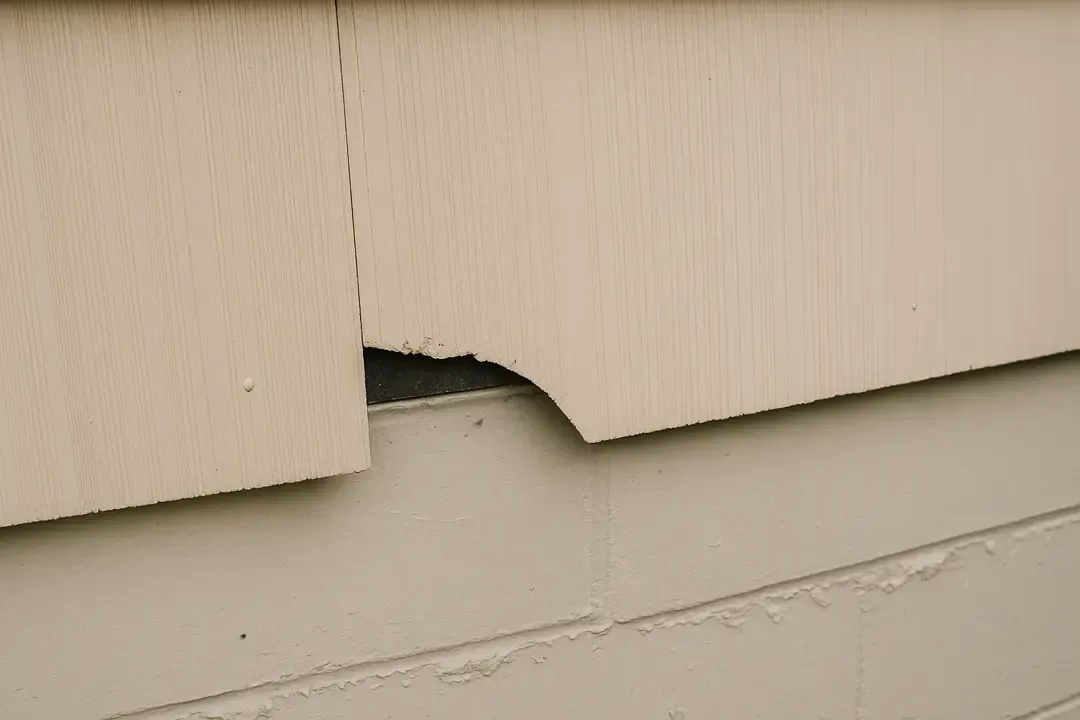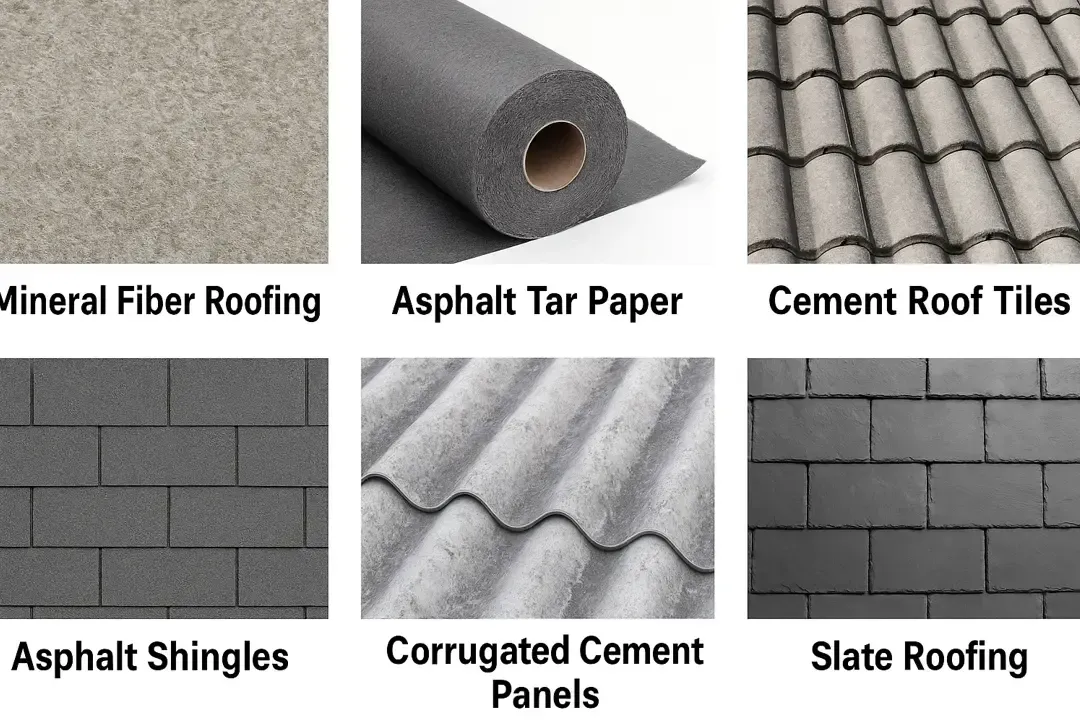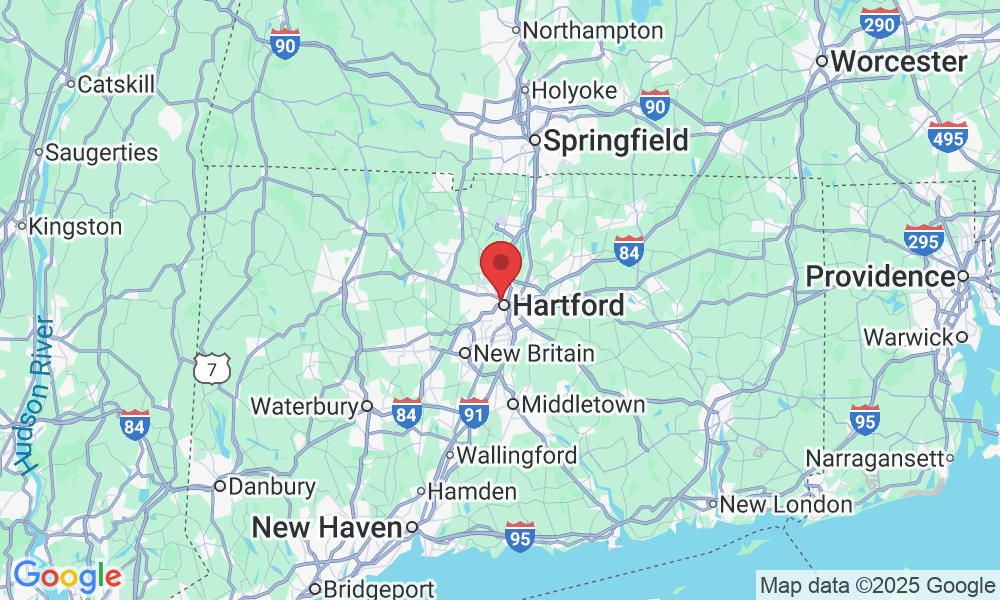Safe Asbestos Siding & Roofing Removal in Connecticut
Safe Asbestos Siding & Roofing Removal in Connecticut
Are you planning to upgrade your home's exterior with new siding or a modern roof? Before you begin, it's crucial to consider what you're about to remove. Asbestos-cement siding and roofing materials, widely popular for their durability and fire resistance, were extensively used in Connecticut. Over time, these materials can become brittle, and any disturbance can release dangerous asbestos fibers into the air and surrounding soil.
Identifying Asbestos in Your Home's Exterior
While only laboratory testing can confirm it, here are some clues to identify exterior materials that might contain asbestos in properties built before 1980:
1. Asbestos-Cement Siding:
Often resembles slate or wood shingles but is denser and more brittle. When tapped gently, it produces a distinctive, sharper sound compared to wood or vinyl. It's commonly found in panel or individual shingle form.

1. Asbestos-Cement Siding:
Often resembles slate or wood shingles but is denser and more brittle. When tapped gently, it produces a distinctive, sharper sound compared to wood or vinyl. It's commonly found in panel or individual shingle form.

2. Types of Asbestos-Containing Roofing Materials:
Often resembles slate or wood shingles but is denser and more brittle. When tapped gently, it produces a distinctive, sharper sound compared to wood or vinyl. It's commonly found in panel or individual shingle form.

1. Asbestos-Cement Roof Tiles & Shingles:
These rigid tiles and shingles, similar to cement siding, were widely used for their durability and fire resistance. They come in various forms and colors, often mimicking slate or wood shakes
2. Asphalt Shingles (Certain Types):
While most modern asphalt shingles do not contain asbestos, older versions (particularly those manufactured before the 1980s) sometimes incorporated asbestos fibers for added strength and fire resistance. The backing or felt layers are often the primary concern.
3. Asphalt Tar Paper & Roofing Felts:
Used as an underlayment beneath shingles or other roofing materials, these felts and tar papers frequently contained asbestos to increase tear resistance and fireproofing. They pose a significant risk during roof tear-off procedures.
4. Mineral Fiber Roofing:
A broader category that can include various materials where mineral fibers (including asbestos) were integrated for reinforcement or insulation properties in roofing systems.
5. Corrugated Cement Panels:
Often found on industrial, agricultural, or sometimes larger residential buildings, these strong, wave-patterned panels were made with asbestos cement for durability and weather resistance.
6. Slate Roofing (with Asbestos Components):
While natural slate itself does not contain asbestos, the mastics, sealants, or underlayments used in older slate roofing installations could potentially contain asbestos fibers. Disturbance of these associated materials is a risk.
7. Asbestos Roofing Mastices, Coatings & Flashing:
Applied as sealants, protective layers, or flashing around chimneys, skylights, and valleys, these materials could contain asbestos. Disturbance during roof replacement or repair is a high-risk activity.
2. Types of Asbestos-Containing Roofing Materials:
Often resembles slate or wood shingles but is denser and more brittle. When tapped gently, it produces a distinctive, sharper sound compared to wood or vinyl. It's commonly found in panel or individual shingle form.

1. Asbestos-Cement Roof Tiles & Shingles:
These rigid tiles and shingles, similar to cement siding, were widely used for their durability and fire resistance. They come in various forms and colors, often mimicking slate or wood shakes
2. Asphalt Shingles (Certain Types):
While most modern asphalt shingles do not contain asbestos, older versions (particularly those manufactured before the 1980s) sometimes incorporated asbestos fibers for added strength and fire resistance. The backing or felt layers are often the primary concern.
3. Asphalt Tar Paper & Roofing Felts:
Used as an underlayment beneath shingles or other roofing materials, these felts and tar papers frequently contained asbestos to increase tear resistance and fireproofing. They pose a significant risk during roof tear-off procedures.
4. Mineral Fiber Roofing:
A broader category that can include various materials where mineral fibers (including asbestos) were integrated for reinforcement or insulation properties in roofing systems.
5. Corrugated Cement Panels:
Often found on industrial, agricultural, or sometimes larger residential buildings, these strong, wave-patterned panels were made with asbestos cement for durability and weather resistance.
6. Slate Roofing (with Asbestos Components):
While natural slate itself does not contain asbestos, the mastics, sealants, or underlayments used in older slate roofing installations could potentially contain asbestos fibers. Disturbance of these associated materials is a risk.
7. Asbestos Roofing Mastices, Coatings & Flashing:
Applied as sealants, protective layers, or flashing around chimneys, skylights, and valleys, these materials could contain asbestos. Disturbance during roof replacement or repair is a high-risk activity.
Our Safe & Compliant Exterior Removal Process
The elimination of exterior asbestos materials requires a specific set of precautions to protect your property, your neighbors, and the surrounding environment:
The elimination of exterior asbestos materials requires a specific set of precautions to protect your property, your neighbors, and the surrounding environment:
1. Site Preparation & Ground Protection
Our process begins by securing the area. We cover the ground around the work zone with heavy-duty polyethylene sheeting and any nearby vegetation to capture all debris.
2. Wet Removal Methods & Manual Deconstruction
We never use power tools that generate dust (like grinders or saws). Our team continuously wets the materials and carefully removes each shingle or panel by hand to suppress dust and prevent fiber release into the air.
3. Secure Containment & Disposal
Every piece of asbestos-containing material is securely packaged or wrapped in EPA-approved disposal containers on-site, ready for transport and disposal in accordance with all state and federal laws.
4. Final Site Cleanup & Air Clearance
After removal, we conduct a detailed visual cleanup of the entire work area, followed by HEPA vacuuming of the ground and nearby surfaces to ensure your property is spotless and safe.
1. Site Preparation & Ground Protection
Our process begins by securing the area. We cover the ground around the work zone with heavy-duty polyethylene sheeting and any nearby vegetation to capture all debris.
2. Wet Removal Methods & Manual Deconstruction
We never use power tools that generate dust (like grinders or saws). Our team continuously wets the materials and carefully removes each shingle or panel by hand to suppress dust and prevent fiber release into the air.
3. Secure Containment & Disposal
Every piece of asbestos-containing material is securely packaged or wrapped in EPA-approved disposal containers on-site, ready for transport and disposal in accordance with all state and federal laws.
4. Final Site Cleanup & Air Clearance
After removal, we conduct a detailed visual cleanup of the entire work area, followed by HEPA vacuuming of the ground and nearby surfaces to ensure your property is spotless and safe.
Ready to Renovate Your Home's Exterior?
Start your siding or roofing project with the confidence that the old material has been handled safely and professionally. Contact us today for a thorough assessment and a free estimate.
Frequently Asked Question
What exactly is asbestos and why is it dangerous?
Asbestos is a naturally occurring mineral composed of microscopic fibers. Due to its heat resistance and durability, it was heavily used in building materials until the 1980s. It is dangerous because, if disturbed, it releases these fibers into the air. When inhaled, they can become lodged in the lungs and, over time, cause serious illnesses like asbestosis and cancer.
How do I know if I have asbestos in my home?
It's impossible to know just by looking. Generally, if your home was built before 1985, there is a chance it contains asbestos in materials like attic insulation (vermiculite), floor tiles, popcorn ceilings, exterior siding, or pipe wrap. The only way to be 100% certain is through laboratory testing.
Should I take a sample myself to get it tested?
No, never. Taking a sample yourself without the proper equipment and protocols can be very dangerous, as it can release a high concentration of fibers in a small area. You should always contact a certified professional for inspection and sampling. We coordinate this service with independent firms to ensure your safety. (You can read more on our [Asbestos Inspection & Testing] page).
Is it safe to stay in my home during the asbestos removal process?
It depends on the scope and location of the project. For small, well-contained jobs, it may be possible to remain in the house. For larger projects, especially those in high-traffic areas or involving the HVAC system, we recommend arranging to be off the property. Your family's safety is our #1 priority, and we will always give you a clear and honest recommendation for your specific situation.
How long does an asbestos removal project take?
The duration varies depending on the size and complexity of the job. A small project in a basement might take 1-2 days. A full attic abatement could take 3-5 days or more. Your detailed estimate will include a projected timeline.
What happens to the asbestos after you remove it?
Asbestos is a regulated hazardous waste. All material is placed in sealed and labeled bags or containers according to EPA and CT DEEP regulations. It is then transported by licensed haulers to a specific landfill that is licensed to receive asbestos waste. We provide you with all disposal documentation for your records.
How much does asbestos removal cost?
The cost varies and depends on several factors: the amount of material to be removed, its location and accessibility, and the type of material (loose vermiculite is different from floor tiles). This is why we cannot give a price without seeing the site. What we do guarantee is a detailed, transparent estimate with no hidden costs.
Is the estimate free?
Yes, absolutely. Our initial site visit to assess the project and provide you with a detailed estimate is completely free and without obligation.
Are there any financial aid or rebate programs available?
Yes! The most notable case is the ZAI Trust, which can reimburse homeowners for a significant portion of the cost of vermiculite insulation removal. We are very familiar with this process and can guide you through it. (You can read more on our Rebates & Cost-Saving Programs page).
Are you licensed and insured in Connecticut?
Yes. Alberca Construction Company LLC holds all required licenses from the state of Connecticut for asbestos and hazardous material abatement. We also carry full general liability insurance and a specific pollution liability insurance policy for your complete protection and peace of mind. (You can see more on our Certifications page).
What areas of Connecticut do you serve?
We serve the entire state of Connecticut from our base in Hartford.
How far in advance do I need to schedule my project?
We try to be as flexible as possible. Generally, once an estimate is approved, we can schedule work to begin within 1-2 weeks, depending on our current workload. For emergency situations, we will do everything we can to assist you sooner.
Get In Touch
Email: [email protected]
Phone: (860) 206-7176
Address : 180 Walnut St, Hartford Connecticut 06120
Assistance Hours :
Mon – Sat 7:00am - 5:30pm
Sunday – CLOSED


